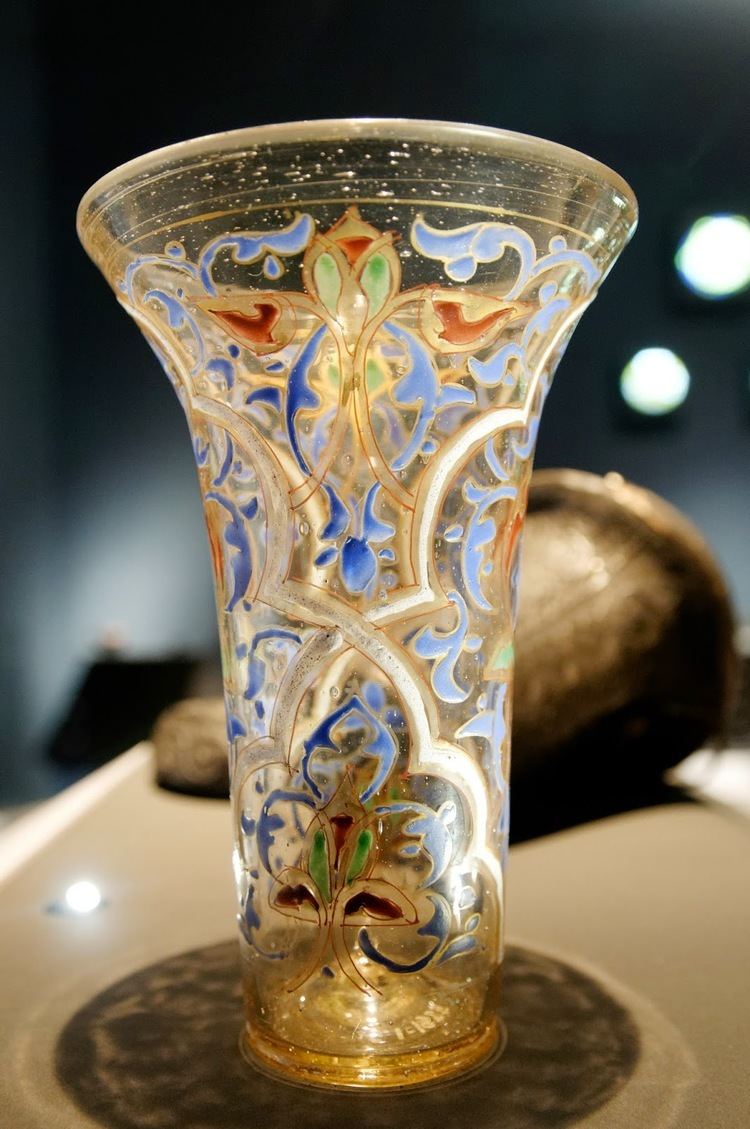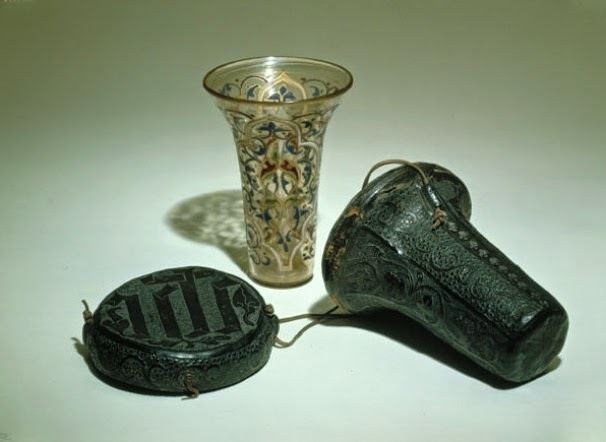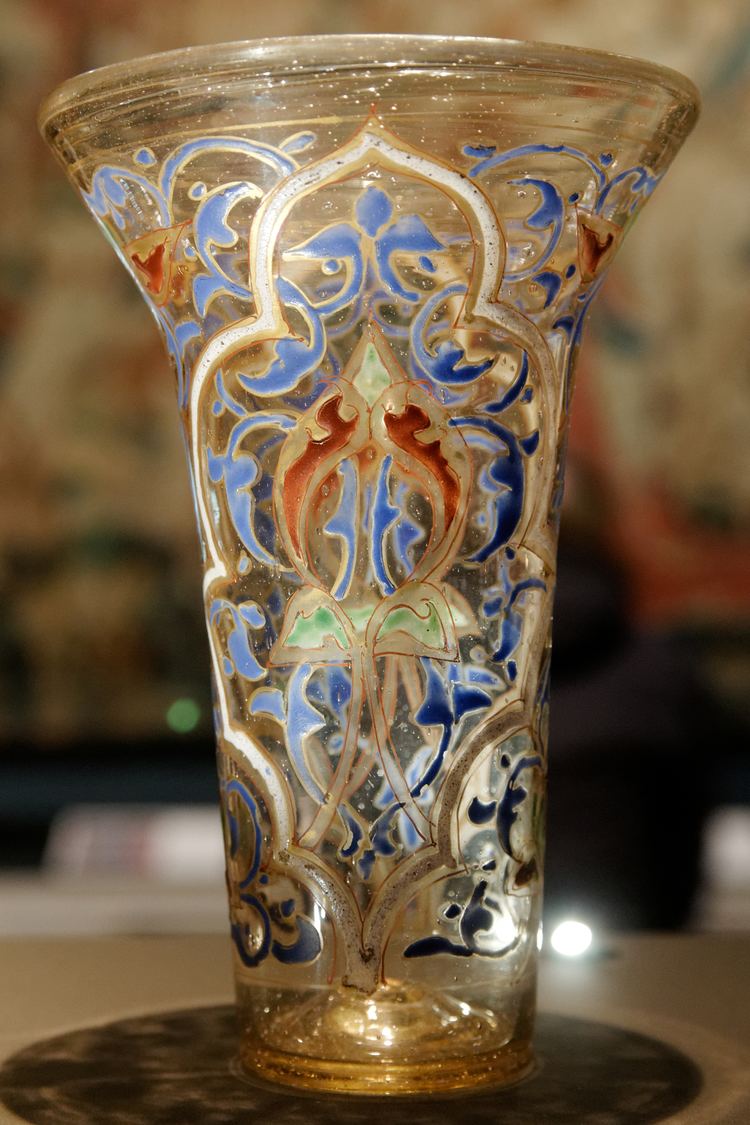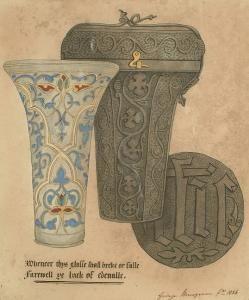 | ||
The "Luck of Edenhall" is a glass beaker that was made in Syria or Egypt in the middle of the 14th century, elegantly decorated with arabesques in blue, green, red and white enamel with gilding. It is now in the Victoria and Albert Museum in London and is 15.8 cm high and 11.1 cm wide at the brim. It had reached Europe by the 15th century, when it was provided with a decorated stiff leather case with a lid, which includes the Christian IHS; this no doubt helped it to survive over the centuries. Glass drinking vessels very rarely survive—or remain in one family—for long enough to acquire a legendary status, so the successful passing of this vessel through many generations of the Musgrave family of Edenhall, Cumberland is exceptional. Legend has it that this ancient beaker embodied the continuing prosperity of its owners. Telling the story in The Gentleman's Magazine in 1791, Rev. William Mounsey of Bottesford wrote:


The beaker is now known to be an exceptionally fine and pristine example of 14th-century luxury Islamic glass. Old stories relating to the "Luck" suggested it found its way to England in the baggage of a returning Crusader. However, recent dating which suggests the Luck was made in the 14th century makes this unlikely as the Crusades ended in the 13th century. The antiquity of the legend surrounding it has not been determined. It was the subject of a German ballad by Ludwig Uhland, later rendered in English by Henry Wadsworth Longfellow; this wrongly says the glass was shattered. A number of rare objects owned by families in the North of England were known as "lucks"; the glass is first documented, and named as the "Luck of Edenhall", in 1677 in the will of Sir Philip Musgrave.

The glass remained intact in the possession of the Musgrave family. In 1926 the glass was loaned to the Victoria and Albert Museum, and in 1958 it was finally acquired for the nation. It remains on permanent view in the Medieval & Renaissance galleries. Eden Hall no longer exists, having been demolished in 1934.

Popular culture

The story of the Luck of Edenhall is told in the 2004 manga Bartender. It is also the namesake for the protagonists's bar, Bar Eden Hall.
The legend of the Edenhall Cup is mentioned in the first chapter of Anthony Trollope's novel The Little House at Allington, saying that guests had to drink from the cup regardless of the danger that it might break.

